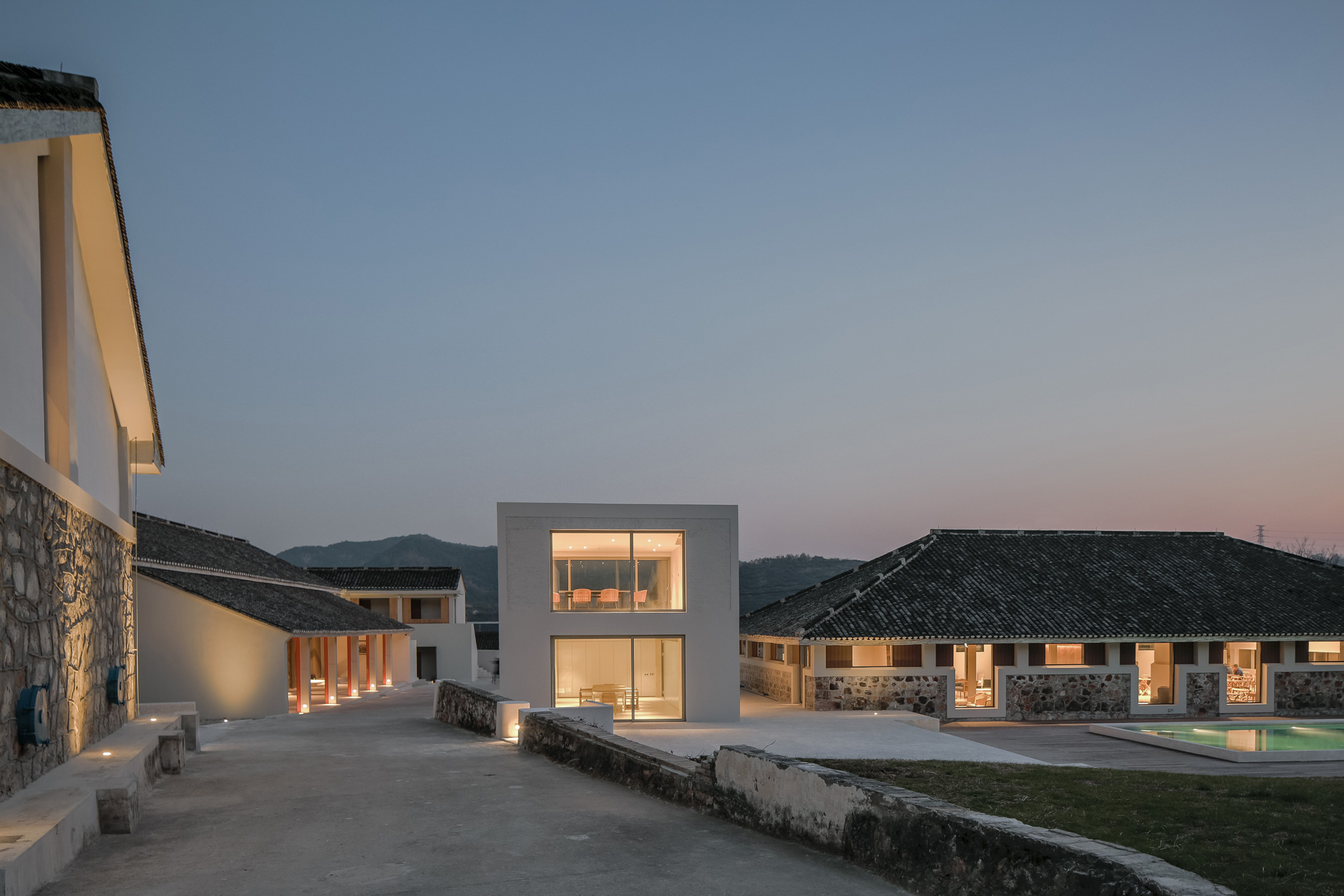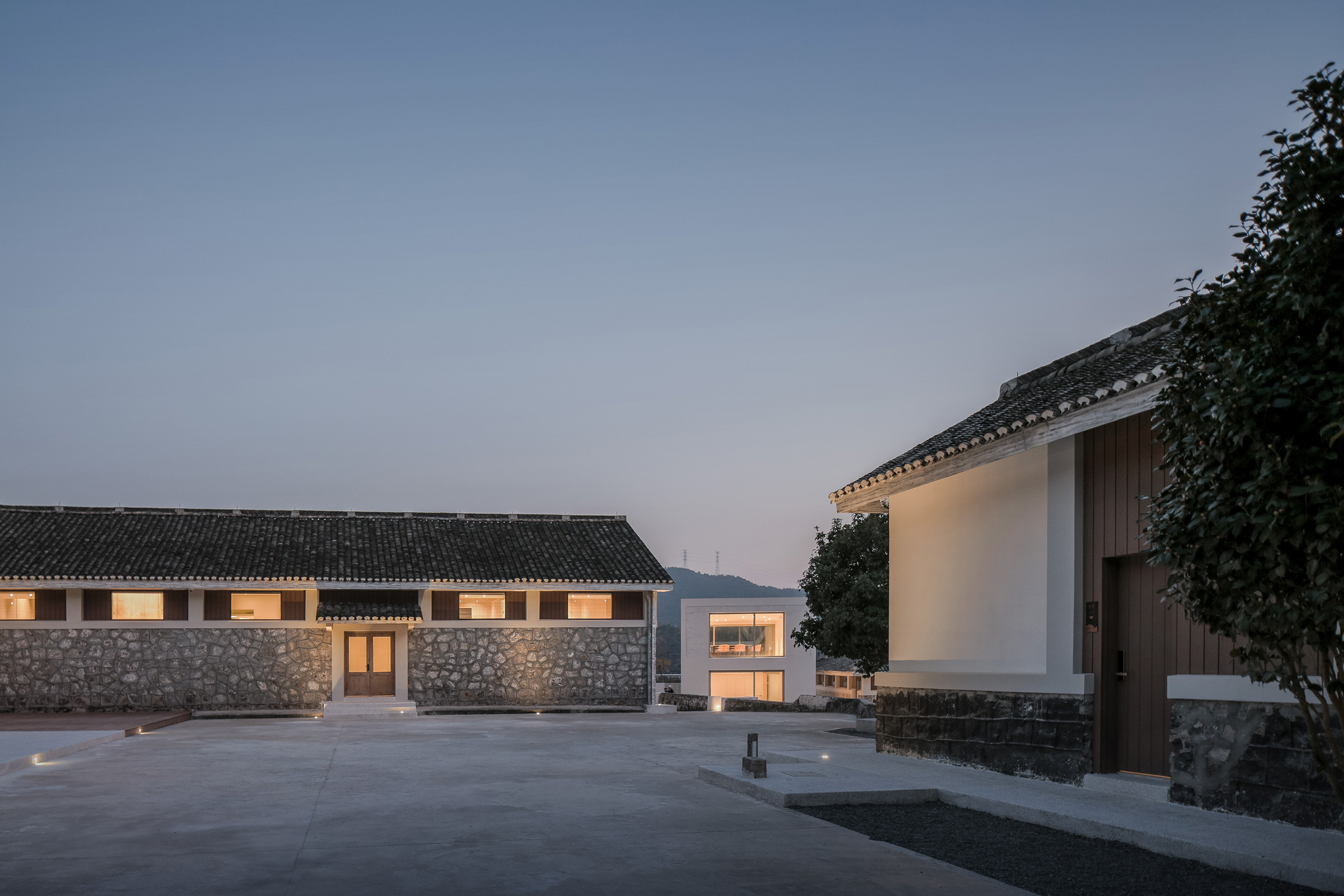


MIYA / Lost Villa Hotel is located in Ninghai County HuChen township. Ninghai is a coastal county in the city of Ningbo, East China’s Zhejiang province. Lying between Tiantai Mountain and Siming Mountain, it boasts a beautiful mountainous territory. This hotel is converted from an old Granary station built in 1956. The site consists of six renovated old buildings and one new addition which functions as reception and meeting facility.
Architecture, Interior, Lighting Design

The renovation process is taking on a sensitive approach to the surrounding beautiful scenery and the old Granary station buildings adjacent. The five of the seven old buildings were built of stone masonry. All windows were very small in size and located beyond reachable height. This became quite a challenge for us in order to fulfill the necessary requirements for a hotel space.
The lower part of the building facade is made of rock stone and the upper part of facade is made of brick. A continuous cement ring beam links them. We enlarged all the window sizes in width at the upper part of the facade and carefully selected the location where the upper windows being extended down in height. This is to minimize the opening cuts in the stone Masonry but at meantime to allow more natural light penetrates into the interior space.
Layers of White paint were being carefully stripped off to reveal the natural color of the stone. We kept the original building structure. Two of the seven buildings have beautiful timber wood structure. We remove the false ceiling to allow all wood structure to be exposed. Steel I-Beams are added either to reinforce the existing structure or to act as a channel for hiding all the utility pipes.
We added new interior walls to create twenty-one guest suites. We also added new washroom facilities to each guest suite. These add on new space is designed as “a room within a room”.
The seventh building built in the 70s was demolished and a new building is designed to be built in the same location. The simple and abstract building form engages a dialogue between the old and new buildings. A slope roofline with an outdoor terrace blends into the traditional slopped roofs around as well as the undulating mountain skyline. The east facade of the new building folds in an angle to echo the existing site condition. Our approach is to understand the existing and to establish a new order in a modern context.
Photographer: Su Shengliang